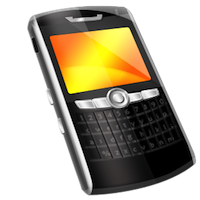 If you are the type of person who loves mobile apps, texting, and getting your email on your phone, then you’re in for a treat: accounting has finally come around to your smartphone. Here are a couple of great developments you can try so you can stay on top of your numbers.
If you are the type of person who loves mobile apps, texting, and getting your email on your phone, then you’re in for a treat: accounting has finally come around to your smartphone. Here are a couple of great developments you can try so you can stay on top of your numbers.
Accounting Apps
For users of QuickBooks desktop and QuickBooks Online, an app is available to help you stay on top of your accounts receivables. You can send invoices, view and update customer information, mark an invoice paid, and check up on customers’ balances.
Examples of other accounting apps that you can access through your phone and sync seamlessly with QuickBooks are: Concur Expense Reporting and ExpenseCloud for expense reports from credit card charges. Bill.com automates your payables, receivables and cash management. SmartVault is a secure document management system. TSheets Time Tracking for Employees.
These apps work on the iPhone, iPad, and Android. Most have a small monthly charge after a free trial.
Bank Apps
If you’re banking with a major bank, chances are “there’s an app for that.” Downloading your banking mobile app will allow you to stay on top of balances, receive alerts, and manage your cash flow more effectively.
Payment Apps
More and more businesses are collecting customer payments via their smartphones. You don’t even need a merchant account for some of these payment apps, like Square, PayPal, or Intuit Mobile GoPayment, but it is cheaper if you do. If you’re not already taking credit cards, it’s an effective way to get started; your customers can pay via Visa, American Express, MasterCard, and Discover.
With many of these payment apps, you download the app, receive a reader in the mail, and are then able to swipe or key in a client’s credit card information. You are charged by the transaction, or monthly, if you sign up for a merchant account. Plus, you can often customize the receipts the client receives with your logo to make them look professional.
Add-on Apps
There are many other mobile apps that can increase your accounting capabilities. Both ADP and Paychex have payroll apps for their clients. There are numerous apps to extend many of your accounting functions, such as expense management, document management, invoicing, time-tracking, bill payment, and even work order management.
Accounting to Go
Now you have a choice with your accounting: you can “eat here” or take it “to go.” If we can help get you equipped as an accounting road warrior, give us a shout.
 One of the most exciting changes in the accounting industry is cloud accounting. The concept is easy to grasp: cloud accounting simply puts your accounting system in a private space online so that it is fully accessible to you via a browser or a secure remote connection.
One of the most exciting changes in the accounting industry is cloud accounting. The concept is easy to grasp: cloud accounting simply puts your accounting system in a private space online so that it is fully accessible to you via a browser or a secure remote connection.

.jpg)



